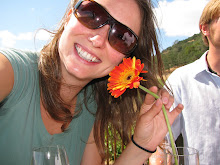Chapter one of Changing Ones begins with an introduction into third and fourth genders in Native American society along with an explanation of the history or the word berdache. A berdache is a third of fourth gender Native American. Before colonization, berdaches were common, and looked up to in many tribes in North America. They were people who born male or female, yet participated in the work typical of the other sex. They sometimes chose to dress in the clothing of the other sex, or in a grab unique to themselves. The Europeans and other Euro-Americans who encountered these aspects of third and fourth genders were very un-excepting due to their beliefs in a binary gender system. The author, Will Roscoe, goes into detail to make sure that the reader understands the history of the word berdache, and how he makes use of the word, in order to stress the importance of how “berdache” does not carry negative connotations. Will then goes on to describe the interaction of the berdaches with the other members of their tribes. As far as sexual relationships went, berdaches were generally known to interact with members of their same sex. Members of the community often felt that because berdaches were powerful, by having sex with one, you could gain some of their power. This excepting view of same sex sexual relations stems from a belief in two types of sex; reproductive and non reproductive. The Euro-Americans could not comprehend this because of a long standing, religious based idea that anything other that procreative sex was sinful. As most of the accounts of encounters with berdaches were recorded by the Euro-Americans, the little that can be found is most likely tainted by their biases. This makes it difficult to study them and compare their life styles between different native groups. However, the author goes on to briefly describe berdaches in the South East, the Northeast and Woodlands, the Plains, the Arctic and subarctic, the Northwest Coast and Columbia Platue, and the West and Southwest. Afterwards, he wraps up the chapter by describing how Euro-American beliefs and views have hidden this aspect of Native American culture and prevented the study of it until the 1980s.
The second chapter begins by introducing Lieutenant Hugh L. Scott, a young officer of the US cavalry in 1877 who became interested in the life of Osh-Tisch, a well know Crow berdache. He interviewed Osh-Tisch and recorded in his notes stories and information of the Crow boté, or berdaches. Osh-Tisch grew up in the transitional period for the Crow, where they went from wandering freely to living in the eyes of the US government on the reservation. He was very well respected as a talented artist, powerful medicine person, and skilled warrior. Will Roscoe goes on to tell stories of Osh-Tisch’s life including not only his accomplishments, but also of his attempted forced assimilation. The chapter ends describing how Christianity was used as a means of turning the Crow against the boté and that it is probably the reason that their have been no more since Osh-Tisch.
So far I have learned a lot from this book. Before reading it, I had never thought about third or fourth gendered people in Native American culture. It is disappointing that so information and culture has been lost over the years. I feel that there is so much we could learn from this culture and how they viewed gender and sexuality. They way the Euro-Americans used Christianity and forced assimilation to mold the Native cultures into what they felt was the ‘right’ way to live. Combined with the other tools used to colonize such as gender violence and oppression of women, I can easily see how the Euro-American society ‘lost’ the third and fourth gender natives.
Roscoe, Will. Changing Ones : Third and Fourth Genders in Native North America. New York: Palgrave Macmillan, 2000. 3-38.
Subscribe to:
Post Comments (Atom)

No comments:
Post a Comment